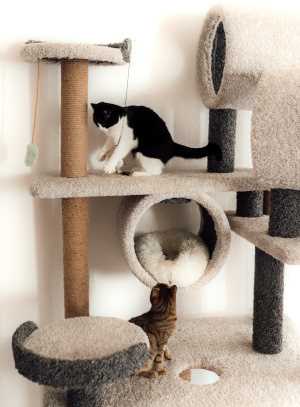Three to four weeks is an ideal period before welcoming another feline into your home. This timeframe allows for adequate adjustment and acclimatization to the new environment, minimizing potential stress for both parties involved.
During this period, focus on creating a separate space for the newcomer. This area should be equipped with essentials such as a litter box, food and water bowls, and a cozy resting spot. Gradually allow the resident feline to become familiar with scents and sounds from the new friend without direct interaction.
After the initial waiting period, consider supervised meetings. Short interactions are crucial for assessing reactions and ensuring a safe introduction. Gradually increase the duration of these encounters, observing body language and behaviors closely.
Timing for Cat Companionship

Typically, a period of at least two to three weeks is advisable before bringing another feline friend into the household. This duration allows for proper acclimatization to the new environment and reduces stress for both parties involved.
During this phase, it’s beneficial to focus on scent exchanges. Swap bedding or toys between the two kitties to help them become familiar with each other’s scents. This can ease the transition when the time comes to meet face to face.
When the initial introductions occur, short and controlled meetings are ideal. Gradually increase the duration of these interactions as comfort levels rise. Monitor their body language closely; signs of aggression or extreme fear may indicate the need for more time apart.
Establish safe spaces for each cat, ensuring they have access to their own territories. This can help minimize territorial disputes and provide a sense of security during the adjustment period.
Patience is vital. Every cat is unique, and some may require more time than others to adjust. Observing their behavior will guide the process and help determine the right moment for deeper integration.
Recommended Waiting Periods Based on Age and Temperament

For kittens under 6 months, a span of at least two weeks is advisable. This allows for gradual socialization while minimizing stress. Their playful nature can help ease tensions during interactions with new companions.
Cats aged 6 months to 2 years might require a waiting period of one to three weeks, depending on their social skills. Young adults often exhibit more independence, so a slow integration process will foster better acceptance.
For mature felines over 2 years, a duration of three to four weeks is optimal, particularly if they display territorial behaviors. Patience in this phase is vital, as older cats can be more set in their routines and less adaptable.
Temperament plays a significant role. A shy or anxious cat may necessitate an extended waiting period to build confidence. Conversely, a more outgoing and friendly cat may adjust quicker, potentially requiring less time before meeting newcomers.
Monitoring behavior during this phase is crucial. Signs of stress or aggression indicate that additional time is needed. Every feline is unique; adjustments based on individual responses can lead to a smoother transition.
Steps to Gradually Introduce Cats to Each Other
Begin with separate spaces for each feline. Provide a safe area for the newcomer equipped with food, water, and a litter box. This allows them to acclimate without stress.
Next, swap scents by exchanging bedding or toys between the two. This helps them become familiar with each other’s smell without direct contact.
After a few days, conduct brief visual meetings. Use a baby gate or keep one cat in a carrier while allowing the other to roam freely. Monitor their reactions closely. Look for signs of curiosity rather than aggression.
Gradually increase the time they see each other. If they remain calm, allow supervised interactions. Keep these sessions short and positive, using treats to reinforce good behavior.
If tensions arise, take a step back. It’s essential to progress at their pace. Patience is key in ensuring a harmonious relationship.
Throughout this process, ensure both cats have their own resources to prevent competition. This includes separate food and water bowls, as well as distinct litter boxes.
Eventually, once they appear comfortable, allow them to share space freely. Continue to observe their interactions and be ready to intervene if necessary.
As they bond, consider their comfort during colder months. A best self warming cat bed for outdoor cats can provide them with a cozy retreat.
Common Mistakes to Avoid When Introducing Cats

Introducing new feline companions can be tricky. Here are key errors to steer clear of:
Rushing the Process

- Skipping gradual introductions can lead to stress and aggression.
- Take your time; each cat has a unique personality and may require different adjustment periods.
Neglecting Individual Spaces
- Forgetting to provide separate areas can make cats feel threatened.
- Ensure each cat has its own safe retreat, complete with food, water, and litter boxes.
Ignoring body language is another pitfall. Cats communicate through subtle cues. Watch for signs of discomfort or aggression.
Lastly, don’t overlook the importance of positive reinforcement. Rewarding good behavior during interactions can foster a friendly atmosphere. Consider using treats or toys to encourage positive associations.
For those with little ones, check out this best baby diaper backpack to make your life easier while managing introductions.









